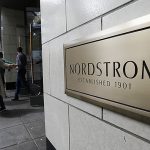Nike, Inc. is targeting top-line revenue growth to $23 billion by fiscal 2011 based on growth across its brand portfolio, up from $15 billion in fiscal 2006. Over the next five years, the company anticipates 75% of this growth will be generated by the Nike brand and will be driven by a consumer-defined category strategy.
By focusing on creating “premium consumer experiences built on product innovation, brand leadership and elevated retail presence,” Nike is targeting further geographic expansion and deeper market penetration in all regions. Through disciplined operating management, the company continues to target long-range mid-teen earnings per share growth.
“As the market leader, we have the ability and the responsibility to take the industry and our partners to a new and better place,” said Nike Inc. President and CEO Mark Parker. “The ability to connect with consumers is the single most important competitive advantage in our industry today. Nobody does this better than Nike. Our vision is clear. I've never been more excited about our opportunities.”
Parker also highlighted the growth performance and potential of Nike Inc.'s affiliate brands — Cole Haan Holdings, Converse, Exeter Brands Group, Hurley International, NIKE Bauer Hockey, and NIKE Golf. These businesses represent revenues of nearly $2 billion. Collectively over the past five years, Nike's affiliate brands have more than doubled revenue and their pretax income contribution.
Each affiliate brand has strong growth opportunities, but the Nike brand will continue to lead the company's performance, Parker said. The Nike brand is creating integrated, premium consumer experiences across footwear, apparel and equipment in six core categories: running, basketball, football (soccer), women's fitness, men's training and sport culture. These categories are expected to drive over 75 percent of the brand's growth.
With a consumer category focus, Nike expects to grow geographically in all regions. Nike will drive deeper growth in the United States, United Kingdom, Japan and China-four key markets that account for 61 percent of Nike brand revenues today. In addition to those markets, Nike also will invest aggressively in countries such as Russia, India and Brazil, each of which has the potential to become a new billion-dollar market.
Nike is focused on elevating the retail experience for consumers. Nike's wholesale business model will continue to be the primary driver, with retail partners expected to continue to generate more than 80 percent of sales in 2011. Nike will work closely with key retail partners to create more elevated and differentiated retail experiences. The company expects to begin executing segmented concepts with key retail partners in the United States over the next two years.
Nike also will expand its own retail expertise and direct-to-consumer businesses. “Becoming a better retailer will help us be a better wholesale partner,” Parker said. By 2011, the company expects Nike direct-to-consumer sales, which include inline stores, factory outlets and e-commerce, to increase to 15 percent of sales, up from the current 12 percent. Growth will come from all three Nike direct-to-consumer categories.
The company anticipates opening approximately 100 new inline Nike stores worldwide, with up to half expected to open in the United States over the next three years, to elevate the brand experience, position the Nike brand in the world's premium shopping locations and test innovative retail concepts that can serve as a growth catalyst for the specialty athletic retail industry.
“In today's world, power has shifted away from traditional brand growth models to growth driven by the power of consumers,” Parker said. “No one is better positioned than Nike to take advantage of this. We will drive growth and build shareholder value by embracing the power of the consumer and creating a new marketplace.”









